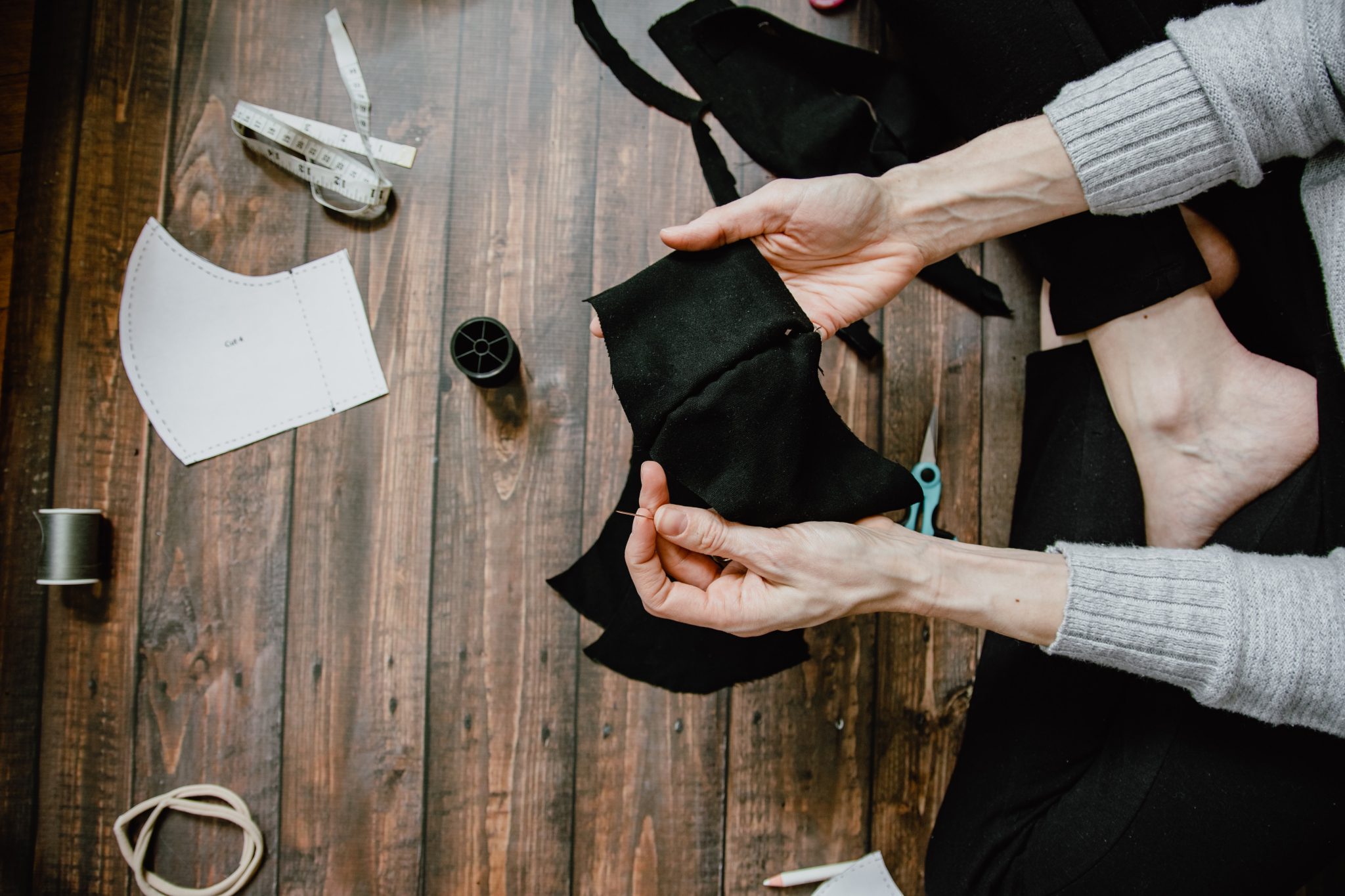Homemade Face Masks: Washing, Wearing And Making Them
There’s a right way and a wrong way to use a mask to protect against COVID-19. And don’t put them in the microwave to clean them — seriously.

Health experts, including the U.S. Surgeon General, have been urging Americans to make their own face masks to prevent the spread of the 2019 novel coronavirus, and to ensure health care workers have enough N95 masks.
But how do you make one? What materials are best? How many do you need? And how do you keep it clean?
Lesley Dipiazza is raising money for the Detroit Hand Sanitizer Project, which is distributing free locally-made sanitizer and masks. (Full disclosure: Dipiazza donated some of both to WDET.)
“If you pull a mask down around your neck or on top of your head, you risk contaminating it.” — Lesley Dipiazza.
She’s been reading up on the best practices for making and using face masks, following guidelines that have been reviewed by health professionals.

She says 100% cotton is the best material, but says an old t-shirt is not ideal.
“A t-shirt is pretty stretchy and doesn’t have as tight a weave,” Dipiazza says.
Instead, she recommends quilter’s cotton.
“Right now, I have a team of 12 mask makers and two of them are quilters,” she says.
Dipiazza says while distributing masks to Metro Detroiters, she noticed that many were misusing them. She thought it would be a good idea to get some pro tips and share them with people receiving her masks. She hopes that will put people at ease.
“I thought it isn’t right to give them masks without some safety information,” Dipiazza says.
Click on the player to hear Lesley Dipiazza tips on wearing masks.
Sanitizing your mask
She says one important thing to know is how to clean one.
“You can wash any of the fabrics in your washing machine with hot, soapy water and then dry it,” she says. “If you don’t have a washing machine, you can clean the mask by boiling it in water for three minutes.”
Dipiazza says she tested these methods herself and found the masks withstood them.
But she warns people not to try sanitizing masks by zapping them in a microwave oven.
“Not only is there no information that that works, we’ve seen pictures of masks that have caught fire from people putting them in the microwave,” Dipiazza says.
How to wear it (and how not to)

Ideally, a mask should cover one’s nose, mouth and chin. But Dipiazza says she’s seen too many people wearing them the wrong way. She says if you want or need to remove your mask, be careful.
“If you pull it down around your neck or up on top of your head, you risk contaminating it,” she says. “And when you reapply it, you could potentially transfer the virus directly into your mouth and nose.”
How many do I need?
Dipiazza says having several masks will reduce wear-and-tear and protect you if one gets dirty or damaged.
“I’m finding that I need about a dozen masks,” she says. “I can just put them in the laundry at the end of the day and have a clean one in the morning.”
Dipiazza also keeps a backup mask in a plastic bag in her purse.
